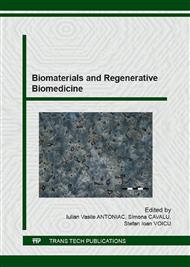p.25
p.31
p.35
p.41
p.46
p.50
p.55
p.59
p.65
The Assessment of Ceramic Dental Materials during the Treatment of Severe Adult Cleft Palate: A Case Study
Abstract:
The materials used in the treatment of an adult patient with severe cleft palate need to be choose very carefull, according with the biological aspects. First of all, is mandatory to choose a proper material for endodontic treatment and use a correct technique. Second, the cement used in order to fix a RPD (rapid palatinal disjunctor) has to be glass-ionomer cement, because the oral and nasal cavity are still communicating. On the other hand, the dental ceramic material used in the prosthetic treatment has to be a special one, pink-colored in those regions where cleavage is present. For this reason, the cases with cleavage need a complex treatment, usually during a few years and several steps. They need a good collaboration between doctors of different specialities: maxillo-facial surgery, orthodontics, prosthetics and plastic surgery. The aim of the present study is to underline the assessment of ceramic dental materials during the laborious treatment in the case of an adult with cleft palate, in order to obtain the best results.
Info:
Periodical:
Pages:
46-49
Citation:
Online since:
May 2016
Authors:
Price:
Сopyright:
© 2016 Trans Tech Publications Ltd. All Rights Reserved
Share:
Citation:


